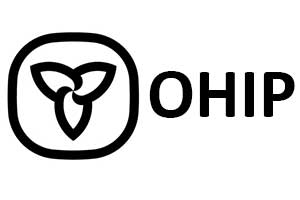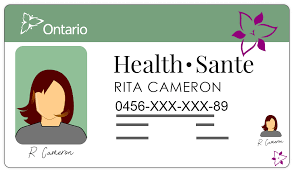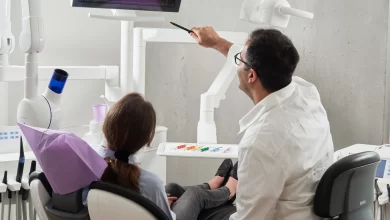Ohip Dental Coverage

OHIP dental coverage is limited, primarily covering children and some low-income residents. It does not typically cover routine dental services for adults.
Navigating the scope of Ontario’s Health Insurance Plan (OHIP) can be a bit of a maze, especially when it comes to dental coverage. With a focus on providing essential medical care, OHIP’s dental benefits are not comprehensive for the general population.
The plan ensures that children and youth 17 and under have access to dental services through the Healthy Smiles Ontario program. Additional dental coverage is granted to eligible low-income individuals and seniors, aiming to reduce financial barriers to oral health care. Understanding these benefits is crucial for Ontario residents seeking support for dental expenses, as many common dental procedures, such as check-ups, cleanings, fillings, and extractions for adults, are not covered and require either private insurance or out-of-pocket payment.
Understanding Ohip Dental Coverage
Oral health is a vital part of overall wellness, which is why understanding your dental coverage options in Ontario is essential. The Ontario Health Insurance Plan (OHIP) can be slightly confusing when it comes to what dental services it covers. This post demystifies OHIP dental coverage, outlining the types of dental care included and the criteria for eligibility.
Ohip’s Coverage For Dental Care
OHIP provides limited dental coverage, typically confined to specific circumstances that necessitate hospital-based dental work. Knowing what OHIP covers can help you plan for dental care expenses.
Here’s an overview of what OHIP dental coverage includes:
- Emergency dental surgeries that need to be performed in a hospital setting.
- Dental procedures required due to an accident, provided they are done in hospital.
- Certain dental services for those with specific medical conditions, such as oral cancer or congenital dental anomalies.
It’s important to note that preventative dental services, such as cleanings and fillings, are usually not covered by OHIP.
Eligibility Criteria For Dental Coverage Under Ohip
To receive dental coverage under OHIP, individuals must meet certain criteria. These are the circumstances that may qualify you for OHIP’s dental benefits:
| Eligibility Criteria | Description |
|---|---|
| Procedure Necessity | The dental care must be medically necessary and carried out in a hospital environment. |
| Accidental Injury | If you require dental surgery as a result of traumatic injury, eligibility may be granted. |
| Medical Condition | Dental coverage applies if you have specific medical conditions requiring associated dental treatment. |
| Age or Income-based Programs | Certain population groups – such as children under specific programs, or eligible seniors – may receive dental benefits. |
This eligibility criterion is fundamental in determining whether OHIP will cover your dental services, so ensure that you verify with Ontario’s health services to see if your situation qualifies.
Services Covered By Ohip Dental Coverage
Ohip Dental Coverage represents a vital aspect of healthcare for residents of Ontario, offering essential dental services that promote oral health and general well-being. Understanding what this coverage entails allows individuals to make informed decisions regarding their dental care and effectively manage their health needs. The following sections detail the dental services covered by Ohip, along with the limitations and exclusions of the coverage.
Basic Dental Services Included In Ohip Dental Coverage
Ohip Dental Coverage primarily extends to preventative care and emergency dental services. The goal is to provide foundational oral health services that can prevent more serious conditions from developing. Here’s an overview of the included services:
- Examinations: Regular check-ups to monitor oral health status.
- Cleaning: Professional teeth cleaning to remove plaque and tartar.
- X-rays: Diagnostic imaging to identify hidden oral issues.
- Fillings: Treatment for cavities to restore the tooth’s integrity.
- Extractions: Removal of teeth that cannot be saved due to damage or decay.
- Oral Surgery: Necessary surgical procedures to address oral health issues.
Children and youth often benefit from a breadth of coverage under Ohip Dental Plans, including preventative and restorative treatments that help maintain healthy teeth and gums during these crucial development phases.
Limitations And Exclusions Under Ohip Dental Coverage
While Ohip offers coverage for a range of basic dental services, certain limitations and exclusions apply:
| Limitations | Exclusions |
|---|---|
| Frequency caps on cleanings and check-ups | Cosmetic dental procedures (e.g., teeth whitening, veneers) |
| Restrictions on the types of fillings covered | Orthodontic services (e.g., braces, clear aligners) |
| Pre-approval requirements for certain treatments | Non-essential dental surgeries |
Ohip Dental Coverage has precise guidelines on service frequency and eligibility, particularly when dealing with complex procedures. Some services like root canals or crowns might only be covered under specific circumstances or may require patient co-payment. It’s essential for patients to consult with their dentist and confirm coverage details to avoid unexpected out-of-pocket expenses.

Application Process For Ohip Dental Coverage
Understanding the intricacies of the Application process for Ohip Dental Coverage is crucial for residents of Ontario seeking dental benefits. Whether it’s for routine check-ups or emergency dental procedures, knowing how to navigate the application process can lead to significant savings and peace of mind. Below, uncover the steps on how to apply and the necessary documentation required to verify your eligibility for this essential health service.
How To Apply For Ohip Dental Coverage
Filing for Ohip dental coverage is a streamlined process designed to be user-friendly. First, ensure you are a holder of a valid Ontario health card, as this is a precursor to applying for any Ohip benefits. The application can be initiated:
- Online through the official Service Ontario website, often the most convenient method.
- In person at a Service Ontario location, which can be particularly helpful for those who require assistance.
- By mail, for individuals who prefer traditional application methods or may not have internet access.
It’s paramount to fill out the application with accurate personal details and information regarding your health and dental care needs.
Required Documentation And Eligibility Verification
Successful enrollment in Ohip dental coverage hinges on providing a concise collection of documents. These validate your identity, residency, and the legitimacy of your healthcare needs. Below is a synopsis of the required documentation:
| Type of Documentation | Description | Examples |
|---|---|---|
| Personal Identification | Confirms your legal name and age. | Ontario Health Card, Driver’s License, Birth Certificate |
| Residency Verification | Evidence of your residence in Ontario. | Utility Bill, Lease Agreement, Employer Record |
| Income Assessment | Indicates your financial standing and eligibility for coverage. | Tax Assessment, Pay Stubs, Social Assistance Documentation |
For eligibility verification, the government assesses your medical and dental care needs. Individuals who meet certain criteria, such as seniors, children under certain programs, or recipients of government assistance, may be pre-approved.
Remember to keep copies of all submissions and maintain a record of any correspondence. Complete and accurate documentation expedites the process, bringing you one step closer to receiving your Ohip dental benefits.
Cost And Benefits Of Ohip Dental Coverage
Understanding the costs and benefits associated with Ohip Dental Coverage can be crucial for residents of Ontario when considering their dental care options. This coverage often provides a safety net that ensures essential dental services are accessible without causing financial strain. The details of this coverage reveal many potential advantages, especially when compared to private insurance plans. Let’s delve into the specifics, such as out-of-pocket expenses, and explore the intrinsic benefits of Ohip dental coverage.
One of the main considerations when discussing Ohip Dental Coverage are the out-of-pocket expenses you could expect. Out-of-pocket costs refer to the amount of money an individual would pay for dental services that are not covered by the Ohip program. The degree to which these expenses impact individuals varies based on the provided coverage scope which includes, but is not limited to:
- Payment Caps: Coverage may be subject to yearly maximums
- Deductibles: Certain plans might require a deductible before coverage kicks in
- Excluded Services: Some advanced dental services might not be covered
- Co-payments: A percentage of the service cost might need to be co-paid by the beneficiary
The coverage limits directly influence out-of-pocket expenses. By understanding these limitations, individuals can anticipate their financial responsibilities accordingly.
The advantages of leveraging Ohip Dental Coverage over private insurance options can be significant and include aspects such as financial predictability and comprehensive basic care. Here are some key benefits:
- Low or No Premiums: Often, there are no premiums required for eligible individuals under Ohip, which stands in contrast to private insurances that usually charge monthly premiums.
- Accessibility: Ohip can provide broad access to dental care for those who might otherwise be unable to afford private insurance.
- Streamlined Claims: With Ohip, there’s a reduced need for engaging in the often complex and time-consuming claims procedures associated with private insurance plans.
- No Discrimination Based on Health History: Unlike private insurance, which may consider pre-existing conditions, Ohip coverage is generally not contingent on dental history.
Dental coverage through Ohip ensures that routine and preventative dental services are not a financial burden, which might not be the case with some private insurance policies that have tighter restrictions or exclusion clauses. In essence, Ohip Dental Coverage provides a baseline of dental care aimed at maintaining good oral health while potentially saving residents from high dental care costs.

Enhancing Ohip Dental Coverage
Dental health is a crucial aspect of overall well-being, yet it is often overlooked in public health insurance coverage. The Ontario Health Insurance Plan (OHIP) provides residents with access to many necessary medical services, but dental care has traditionally received limited attention. In recent times, the call for enhancing OHIP dental coverage has gathered momentum, recognizing the integral role oral health plays in maintaining a healthy population. This section delves into the ongoing efforts to improve dental care benefits under OHIP.
Advocating For Expanded Coverage
Advocacy groups and health professionals are joining forces to push for enhanced dental benefits within the OHIP framework. These advocates underscore the undeniable link between oral health and other medical conditions, arguing that neglecting dental care can lead to serious systemic health issues. Current efforts focus on:
- Inclusivity in dental care for marginalized and low-income groups.
- Preventative care to reduce long-term health costs and improve quality of life.
- Accessibility of dental treatment for children, seniors, and people with disabilities.
By expanding coverage, OHIP could offer a more holistic approach to healthcare, ultimately creating a stronger safety net for all Ontarians.
Proposed Changes And Impact On Beneficiaries
The proposed changes to OHIP dental coverage seek to fill the gaps in the current system. These reforms are designed to:
| Proposed Change | Expected Impact |
|---|---|
| Extension of coverage to include preventative care | Reduction in dental emergencies and long-term cost savings |
| Inclusion of basic dental procedures | Improved oral health and accessibility for medically vulnerable groups |
| Implementation of a subsidized cost structure | Enhanced affordability for families and individuals with low income |
Beneficiaries of the enhanced coverage would experience significant improvements in their dental health management, with ripple effects on their overall health status. Children could enjoy a healthier start, adults could prevent progression of diseases, and seniors could maintain better nutritional intake with improved dental care. Overall, the proposed changes aim to make dental care an attainable and essential aspect of healthcare for everyone in Ontario.
Comparing Ohip Dental Coverage With Other Provincial Plans

Understanding the intricacies of Ohip Dental Coverage and stacking it up against other provincial plans allows Canadians to appreciate the healthcare benefits available to them. Dental health is a pivotal aspect of overall well-being, yet the coverage landscape differs markedly across provinces.
Variances In Coverage Between Provinces
The Ontario Health Insurance Plan (Ohip) offers limited dental coverage, focusing primarily on surgical, diagnostic, and preventative care. It’s essential to examine the extent of this coverage and how it contrasts with other provincial healthcare programs.
| Province | Dental Services Covered | Eligible Populations |
|---|---|---|
| Ontario (Ohip) | Dental surgeries in hospital | All residents with Ohip |
| British Columbia | Basic dental care for children | Low-income families |
| Alberta | Emergency dental services and extractions | Seniors and low-income individuals |
| Quebec | Basic dental services for children under 10 | Children and recipients of certain government assistance programs |
The table reflects the diverse approaches to dental care across the country, with nuances that cater to specific demographic segments, such as low-income families, seniors, and children.
Case Studies And Testimonials Of Beneficiaries
Personal experiences often shed light on the efficacy of healthcare plans like Ohip Dental. By sharing testimonials and case studies, we can better understand the real-world implications of these provincial plans.
- Case Study 1: Ontario’s Ohip Beneficiary
- – Emergency dental surgery covered in full.
– “Ohip’s coverage was a lifesaver during my dental emergency. The process was smooth and the financial burden lifted.” - Case Study 2: Alberta’s Dental Assistance for Seniors Program
- – Subsidized routine dental maintenance.
– “The financial aid from the program ensures I don’t neglect my dental health in my golden years.” - Case Study 3: Quebec’s Program for Children
- – Basic dental check-ups and some treatments for children covered.
– “Knowing that my child’s dental care is taken care of brings immense peace of mind. It’s one less thing to worry about.”
These stories paint a vivid picture of the positive impact that nuanced dental coverage can have on individuals’ lives, accentuating the need for tailored health plans that cater to community needs.
Frequently Asked Questions Of Ohip Dental Coverage
What Does Ohip Cover For Dental Care?
OHIP, or the Ontario Health Insurance Plan, does not typically cover dental services. However, it offers limited dental coverage for specific procedures linked to jaw injury or surgery. It is important to check with OHIP for specific details.
Who Is Eligible For Dental Benefits Under Ohip?
Dental coverage under OHIP is generally reserved for youth under 18, seniors, and those on social assistance. Coverage also extends to individuals on Ontario Works or Ontario Disability Support Program. Always verify eligibility with OHIP directly.
How To Apply For Ohip Dental Coverage?
To apply for dental coverage through OHIP, contact your local public health unit. They will guide you through the application process and inform you about the required documents and eligibility criteria specific to your situation.
Are Emergency Dental Services Covered By Ohip?
OHIP may cover emergency dental services if they are performed in a hospital. Conditions like facial traumas or significant infections requiring immediate care may qualify. Routine dental emergencies are typically not covered.
Conclusion
Understanding your OHIP dental coverage options ensures a brighter, healthier smile. Explore plans, research benefits, and stay on top of oral health. Don’t let confusion over policies prevent dental care. Remember, a clean bill of oral health is a gateway to overall wellness.
Start your journey to better dental health today!





